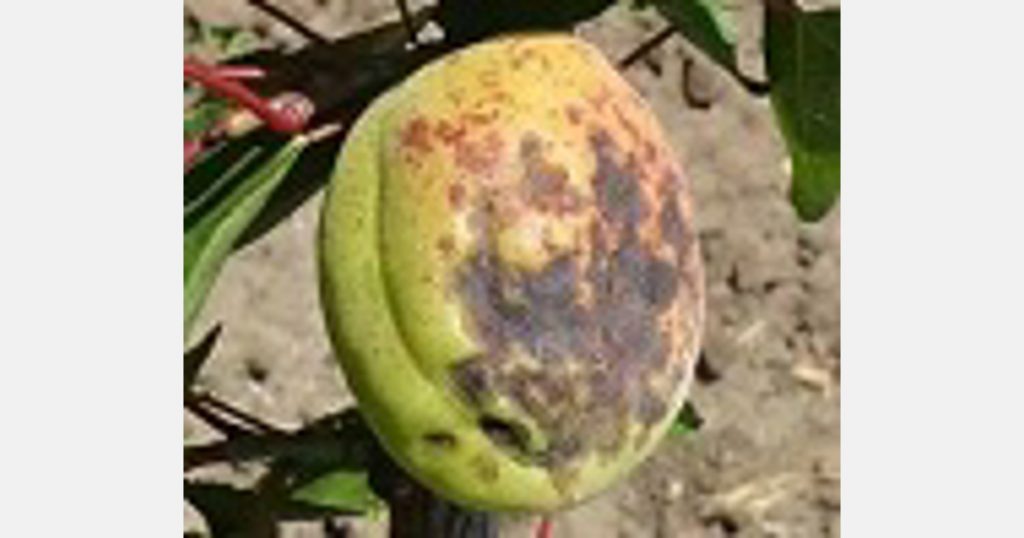In July 2020, symptoms of leaf and fruit spot were observed on two-year old apricot plants (Prunus armeniaca L.), cultivar Rubista in a plantation covering approximately 0,5 ha near Podgorica, central Montenegro. The intensity of the infection on leaves was more than 70%.
Initially, leaf spots were mainly circular, 2 to 5 mm in diameter, water-soaked, surrounded by a weak chlorotic halo, but later became light to dark brown and necrotic. Eventually, the spots merged and necrotic tissue dropped out, leaving a “shot-hole” leaf appearance. On apricot fruits small, dark brown, mainly circular superficial lesions were observed. The lesions merged and formed large necrotic areas reducing the quality of fruits. Symptoms were not observed on woody parts, such as twigs or stem. A total of 10 bacterial strains were isolated from symptomatic leaf and fruit tissue and were analysed by scientists of the University of Belgrade (Serbia) in partnership with Administration of Food Safety, Veterinary and Phytosanitary Affairs in Podgorica (Montenegro)
“Biochemical properties, DNA sequences and pathogenicity test confirmed that the strains isolated from apricot leaves and fruits in Montenegro belonged to Xanthomonas arboricola pv. pruni (Xap), the causal agent of bacterial leaf spot and canker of stone fruits – the scientists explain – This quarantine pathogen was previously reported on almonds in 1998 and on peaches in May-June 2019 in Montenegro. This is the first report of Xap affecting apricots in this country. Therefore, strict phytosanitary measures have to be implemented to prevent the spread of this pathogen in other areas and onto other susceptible hosts.”
Source: Tamara Popović, Jelena Menković, Andjelka Prokić, Aleksa Obradoviċ, ‘First Report of Xanthomonas arboricola pv. pruni Causing Leaf and Fruit Spot on Apricot (Prunus armeniaca L.) in Montenegro’, 2021, Plant Disease.


